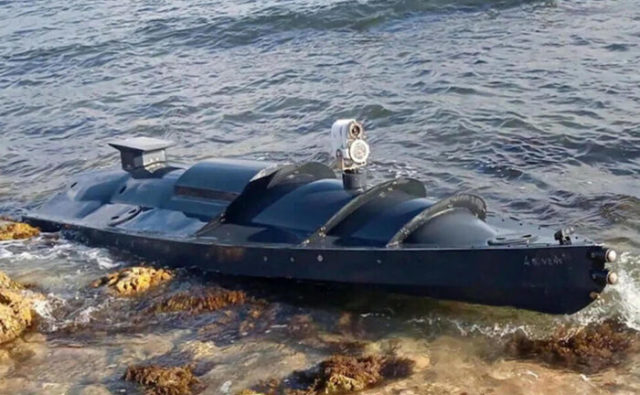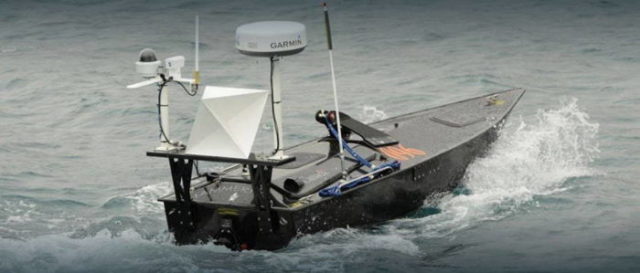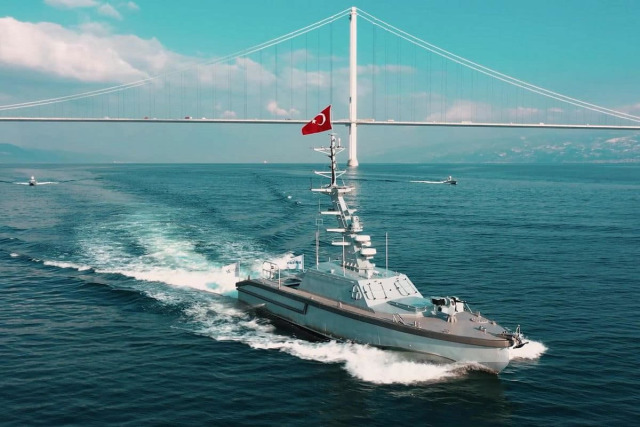Having achieved significant success in the development, production and combat use of unmanned aircraft systems, Turkey is extending its drone expertise to the marine environment. Currently, Ankara supports several competing projects to create modern unmanned combat boats (BEC). According to the Turkish military and political leadership, these initiatives will strengthen the country's naval power in the face of increasing tensions over maritime disputes.
The philosophy of using unmanned boats
The relevance and perspective of the BEC topic has been confirmed during the ongoing conflict in Ukraine. As you know, on October 29, 2022, the armed forces of Ukraine attacked the grouping of the Russian Black Sea Fleet in Sevastopol. According to the Russian Ministry of Defense, nine unmanned aerial vehicles (UAVs) and seven unmanned boats participated in the attack. The actions of this unmanned group were coordinated by the American RQ-4B Global Hawk drone. Presumably, experts from the UK participated in the organization of the attack. The result of the operation was damage sustained by the flagship of the Black Sea Fleet, the frigate Admiral Makarov and the minesweeper Ivan Golubets.

BECK, who participated in the attack on Sevastopol in October 2022
According to Turkish experts, the incident not only became the first example of combat interaction between air and sea robots in military history, but also marked the horizons of a future war at sea. As an active member of NATO, Turkey is directly involved in the development of promising concepts, strategies and tactics for the use of the Alliance's Navy. In general, the views of the NATO Naval Command on the use of forces and assets at sea are reduced to conducting network-centric operations in version 2.0 and three-dimensional missions.
In particular, it is believed that in the coming years, the maritime combat space will be determined by three main factors. First, the "hot zone" will become more dispersed than ever. Secondly, highly efficient weapons systems and sensors will begin to dominate the seas, which will lead to the emergence of marine reconnaissance and strike complexes. These new capabilities, complemented by artificial intelligence (AI), will provide sophisticated data processing and transmission over long distances, and, most importantly, a powerful, high-precision attack. Finally, network–centric warfare is likely to be replaced by the "network of networks" paradigm (the term "megaset" is also used), combining unmanned systems, cross-domain warfare, air, surface and underwater communication lines, algorithmic warfare nodes, space assets, cybersecurity and electronic warfare (EW) tools - all in one place. one super-dispersed combat mega-network.
It is planned that the uninhabited naval complexes will perform the tasks of reconnaissance, surface and anti-submarine warfare, naval air defense, and participate in special operations. They will also be able to act as sensor nodes for large fleets and task forces. With their advanced algorithms and autonomous functions, robot warships will be able to act intelligently and adapt to a rapidly changing battlefield.

Crew-free Humpback boat
Relying on new neural network and machine learning technologies, Unmanned Surface Vehicles (USVs) equipped with various sensors, weapons and other payloads will be able to operate remotely in semi-autonomous or even fully autonomous mode. Compared to traditional manned platforms, back-up systems are usually cheaper to build and operate, since they do not require the facilities or auxiliary equipment necessary to support the life of the crew. In this regard, it seems that the BECs are particularly suitable for long-term missions that exhaust human operators on board, or risky tasks with a high probability of injury, capture or death of the crew. In Western military terminology, such tasks fall under the category of "three D" ("three D"), namely: boring/monotonous (dull), dirty (dirty) or dangerous (dangerous).
According to NATO experts, uninhabited (unmanned) naval systems have the potential to simplify cross-domain integration, improve the capabilities of combat platforms and combat networks. In addition, they are an excellent aid in overcoming the problems associated with the creation of restricted areas/restricted areas (A2/AD). In conditions of increased risk, the BACK reduces it by dispersing capabilities across small, hard-to-reach nodes and expanding tactical choices by creating new concepts for the use of funds.
According to Ismail Demir, head of the Turkish Defense Industry Department, "unmanned solutions are currently at the forefront of Turkey's defense strategy." In his opinion, in the foreseeable future, Ankara will become a key player in shaping the future "unmanned combat space" in the segment of unmanned boats, thanks to new projects.
According to the materials of the resource edam.org.tr

